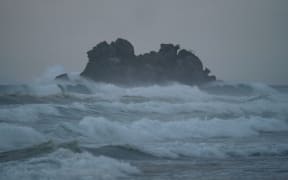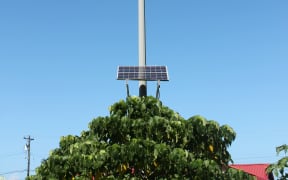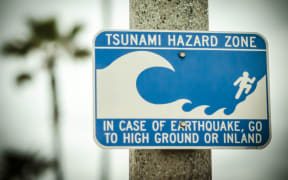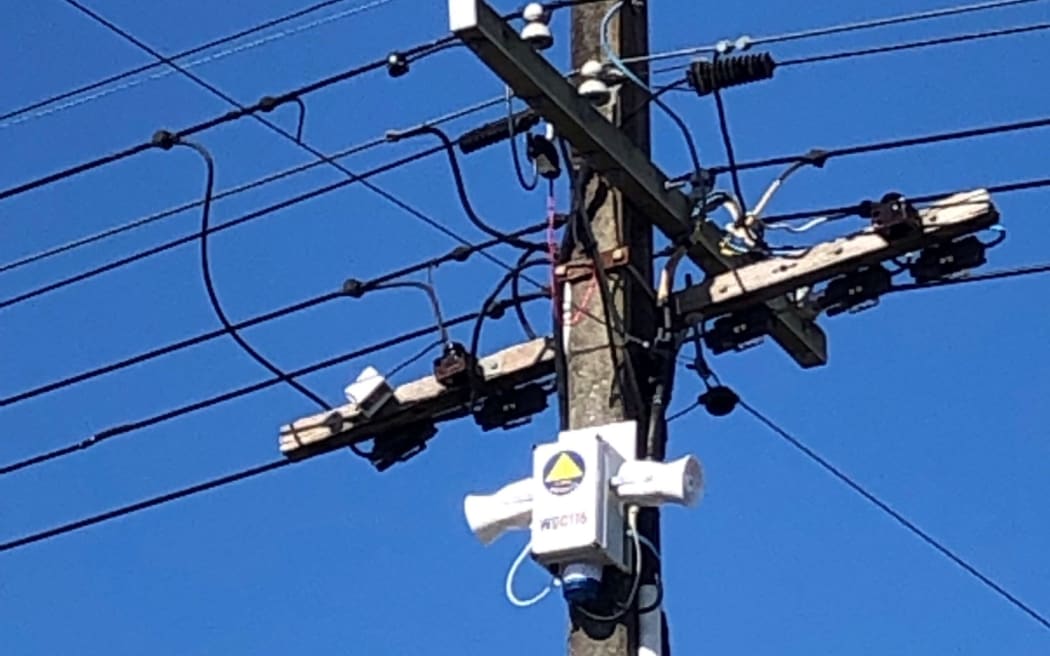
The white shoebox sized unit with speakers on a Northland power pole is among 205 in the region's tsunami network. Photo: LDR / Susan Botting
New Zealand's biggest tsunami siren network upgrade is rolling out across Northland this year.
The $6.7 million to date four-year project funded by Northland ratepayers was the country's first major region-wide project using new Danish designed solar-powered tsunami siren units. The 94-siren rollout was expected to be completed by October.
The new sirens were then expected to be in action from April next year, replacing the region's current older style siren network progressively installed since 2010.
More than 15,000 Northlanders shifted to higher ground on 5 March 2021 after an 8.1 earthquake in the Kermadecs in what was the event's biggest regional tsunami evacuation nationally.

Northland currently has 205 existing sirens - New Zealand's biggest tsunami siren network - that will be in action until the new Danish-designed system kicks in.
Northland Civil Defence emergency management specialist - tsunami projects Brendon Gray said replacing 205 Northland-made sirens with only 94 Danish-designed sirens would not mean loss of public safety.
"Even though the number of new sirens is less than half of the existing ones, due to the increased capabilities of the new sirens, all areas will see improved sound coverage from what they have currently," Gray said.
"These upgraded sirens will provide timely alerts - even in situations where the current network wouldn't be able to, such as during Cyclone Gabrielle where widespread power and mobile network outages impacted the region.
"Upgrading our siren network allows us to stay ahead of the curve. By meeting national and international standards for warning signals, we ensure our early warning system remains effective.
Reduced regional siren numbers will see Whangārei Heads' current 18 sirens halved.
And in the Bay of Islands, siren numbers will be cut by 36 percent from 11 to eight new sirens in the Russell, Paihia and Ōpua area.
Gray said the new sirens were light years ahead of the region's current network.
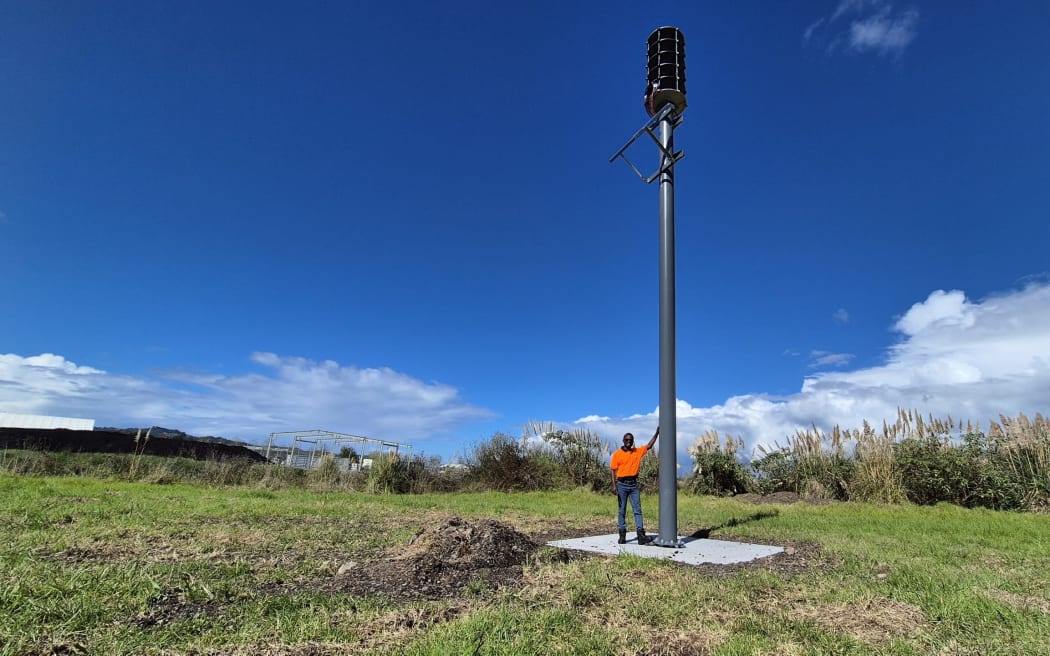
Northland tsunami siren replacement project construction manager Tawanda Shiri with siren 21 that is taking shape at Whangārei's Port Nikau. Photo: LDR / Susan Botting
They had improved sound and functionality.
"The new sirens are quite different from the existing ones," Gray said.
Their shape means their sound, which was louder than the existing network's siren, will be distributed more widely, and less likely to be lost when strong winds carry it away before people have a chance to hear it.
Northland's current tsunami sirens have a 108-118 decibel sound within one metre. The new sirens' sound will be set to about 130 decibels
"The sound will be able to travel much further and more clearly in all directions," Gray said.
Gray said Northland's existing tsunami siren network was put in place between 2010 and 2019, meaning sirens were now up to 14 years old, reaching the end of their lives and expensive to maintain.
Each new Danish siren unit costs about $60,000, compared with $2000 for existing sirens.
The new sirens will be erected on eight metre high poles. They will have north-facing solar panels, a backup battery and control box as well as backup electricity connection.
Gray said a key plus for the new sirens was that they were not reliant on the region's electricity network to function.
The new sirens were activated via the cellphone network or satellite if the phone network was out.

Mapping out Northland's new $6.7 million tsunami siren replacement locations. Photo: LDR / Susan Botting
He said the new siren system also meant separate parts of the network could be individually activated, down to the level of a single unit if needed.
Sirens in the current network can only be set off as a whole unit.
The new sirens will also be able to provide voice warning messages in support of the sirens, indicating whether locals were hearing a test or whether the alerting was about a beach and marine threat only (for people on or near the water) or whether an evacuation was required.
The Danish designed units have already been pre-programmed to be geolocated in their respective locations.
They have ingredients sourced from the United States and China.
The first of the new sirens purchased from Danish company HSS Engineering has just been installed off Whangārei Harbour's lower Port Road.
Further installations will follow from Mangawhai to Cape Reinga along the east coast and at 10 key west coast locations including Ahipara and Waipapakauri on Ninety Mile Beach, Hokianga and Kaipara Harbour's Ruawai.
Whangārei company Barfoote Construction has been contracted to build the concrete pads for and construct and install the new tsunami siren units.
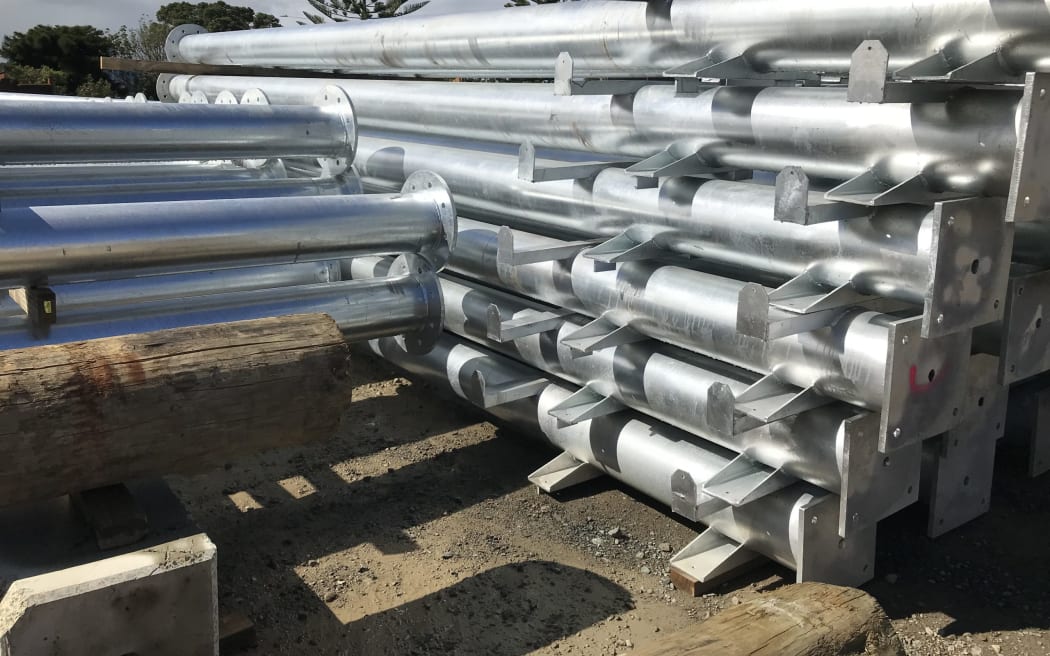
The 8m Chinese-made steel poles supplied by the Danish tsunami siren designers for Northland's $6.7 million siren network warning system upgrade. Photo: LDR / Susan Botting
The company's Northland tsunami siren replacement project construction manager Tawanda Shiri, who hails from Zimbabwe, said the performance difference between the old and new sirens was like that between a tortoise and a cheetah.
Existing sirens will be in action until the new Danish-designed system kicks in after tsunami siren testing the end of 2024/2025 daylight saving in April next year.
The new network's sirens will sound the same as the existing ones.
Northland Civil Defence had been working with the Danish suppliers to identify the best spots for the new sirens whose functionality was already pre-programmed for their own specific geographic locations.
Northland ratepayers have paid for the sirens - Northland Regional Council $2.5m, Whangārei District Council $2.6m, Far North District Council $1.2m and Kaipara District Council $200,000. New Zealand's National Emergency Management Agency put in $250,000.
Northland's three district councils own the tsunami sirens in their area, which were managed by Northland Civil Defence Emergency Management Group on behalf of all Northlanders.
Whangārei will have 46 sirens across Whangārei central business district, Langs Beach/Waipū, Ruakākā/Marsden, Onerahi, Whangārei Heads, Whangaruru, Ngunguru/ Tūtūkākā and Whananaki districts.
Far North will have 42 sirens in the Bay of Islands, Kerikeri, Whangaroa, Doubtless Bay, Whatuwhiwhi, North Cape, Hokianga and Kaitāia districts.
Kaipara will have four sirens in Mangawhai and two in Ruawai district.
LDR is local body journalism co-funded by RNZ and NZ On Air.
